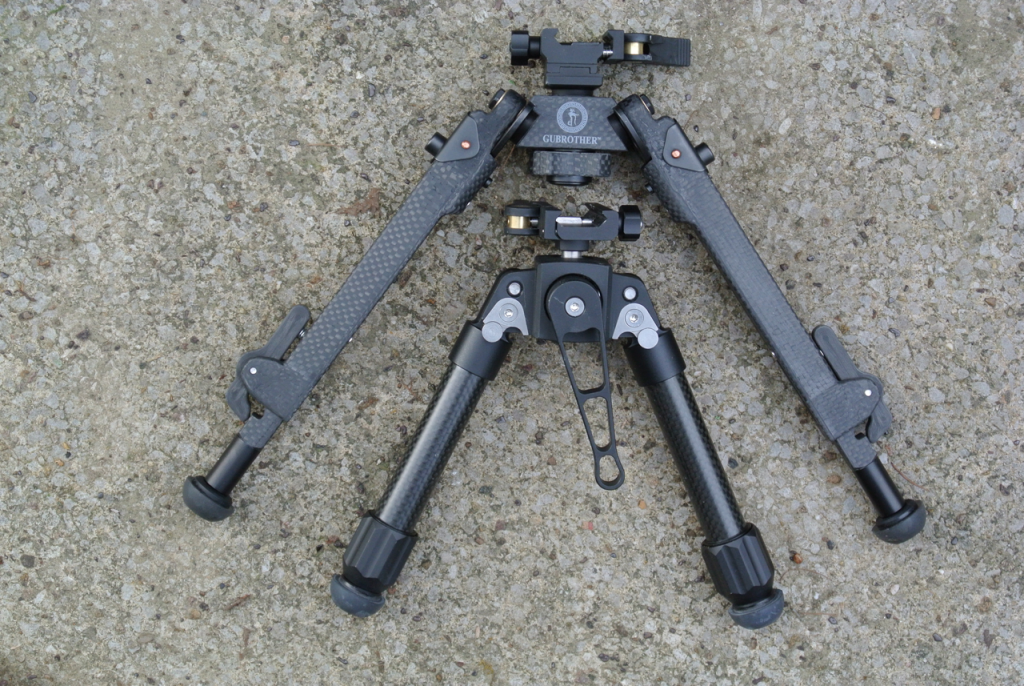
Remember when the only bi-pod you could buy was a Harris? Or one of those clunky Parker Hale things more usually seen on a Bren Gun? How times have changed.
However, the Harris has stood the test of time and is still a damn good bi-pod in my opinion. It might look a bit ‘tinny’ compared to some of the current offerings but honestly, have you every known one to fail? I bought mine way back in the early nineties and I still use it regularly on my Remington PSS for McQueen competitions. And, look how the Harris brand has expanded – there must be a dozen variants by now – offering different heights, swivel tops, notched legs and various rifle-fixings.
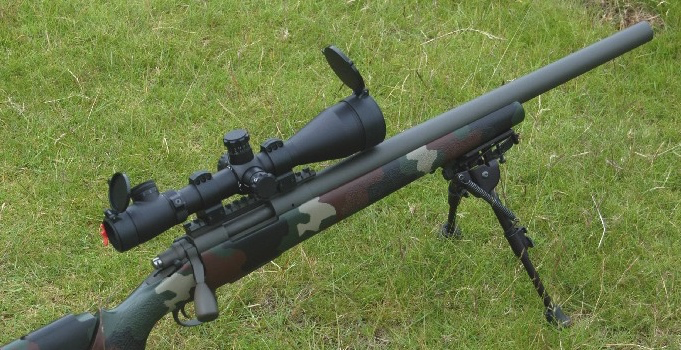
Yes, the poor quality cheapo Asian copies have not helped the Harris brand but the Harris is still a great bi-pod – it’s light, reasonably priced, adjusts and folds quickly. What’s not to like?
Maybe the F Class shooters are partly responsible for the demise of the Harris. It quickly became apparent that the rubber-footed Harris did not offer the stability required with a heavy, long-barreled rifle demanding half MOA accuracy out to extreme ranges.
With FTR, there is no need for a compact folding bi-pod – stability is the only requirement and, the FTR guys now have plenty of more suitable (and more expensive) bi-pods to choose from.
However, there still seems to be a requirement amongst the Tactical/PRS shooter for a better ‘mouse-trap’. The Atlas bi-pod is often the first choice of the discerning rifleman (or woman) but it is expensive, not particularly light and although it appears to be better made than the Harris – is it really that much better as a shooting-platform? OK, you can swing the legs forward but otherwise……..? Sadly, a rather good Chinese Atlas copy soon became available at a fraction of the price.
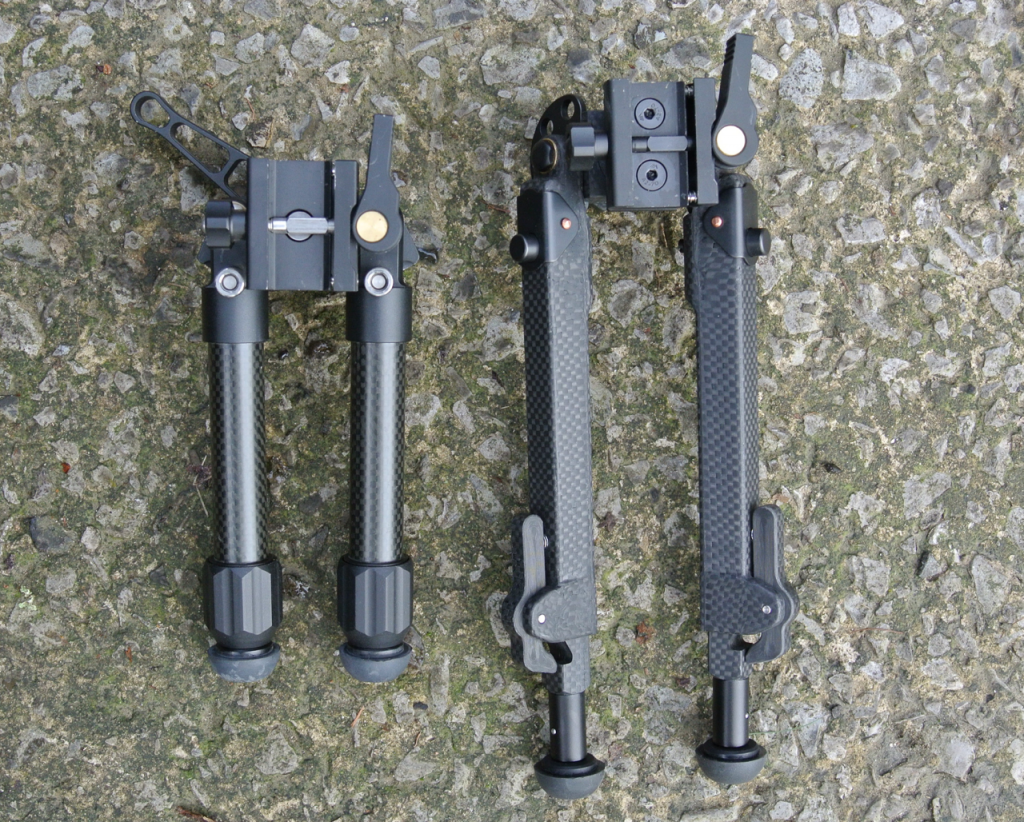
The first bi-pod I saw, which was an improvement on the Atlas, was the offering from Tier One. Similar to the Atlas in some ways, it was lighter, thanks to the use of carbon-fibre for the legs. This also gave the bi-pod a more Gucci look – which always appeals. Check out our review at http://www.targetshooter.co.uk/?p=2829
Whilst you‘re at it, check out the review of the superb Fortmeir bi-pod (also known as the Phoenix). http://www.targetshooter.co.uk/?s=Phoenix+bi-pod This is the Editor’s current go-to bi-pod but there are still occasions when the Harris shines – e.g when the bi-pod must be kept in place when shooting off hand – the light, quick-to-fold Harris is unbeatable.
So, let’s have a look at the two bi-pods we have today. Both employ carbon-fibre in their construction but in different ways.

The first bi-pod immediately reminds me of the Atlas/Tier One offerings. It’s so beautifully made with very easy to adjust (lengthen) legs but a bit more fiddly to fold – employing an over-size locking-lever.
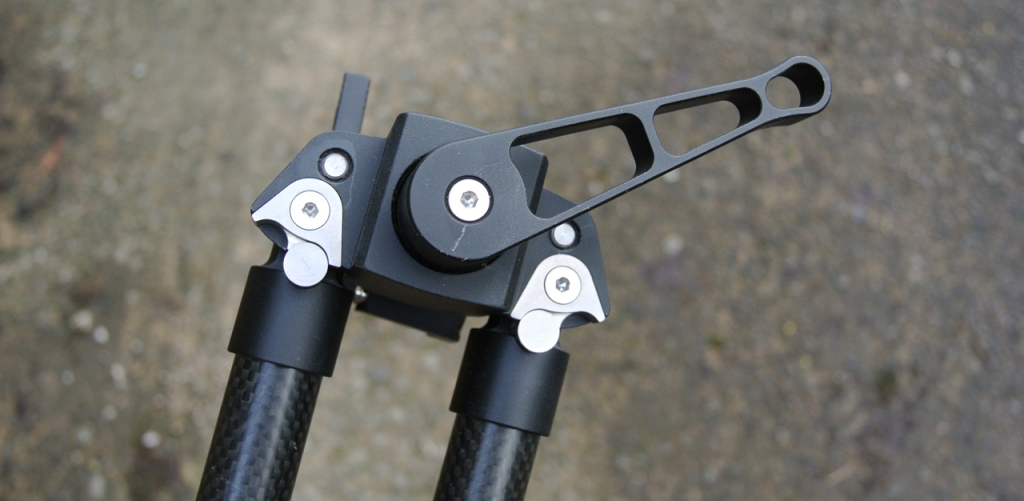
The legs are lengthened by slackening a sturdy fluted nut and can be set to any length as they are not ‘notched’. The locking-lever also permits the head to swiveled horizontally and vertically via a ball & socket arrangement making the set-up multi-adjustable for any terrain.
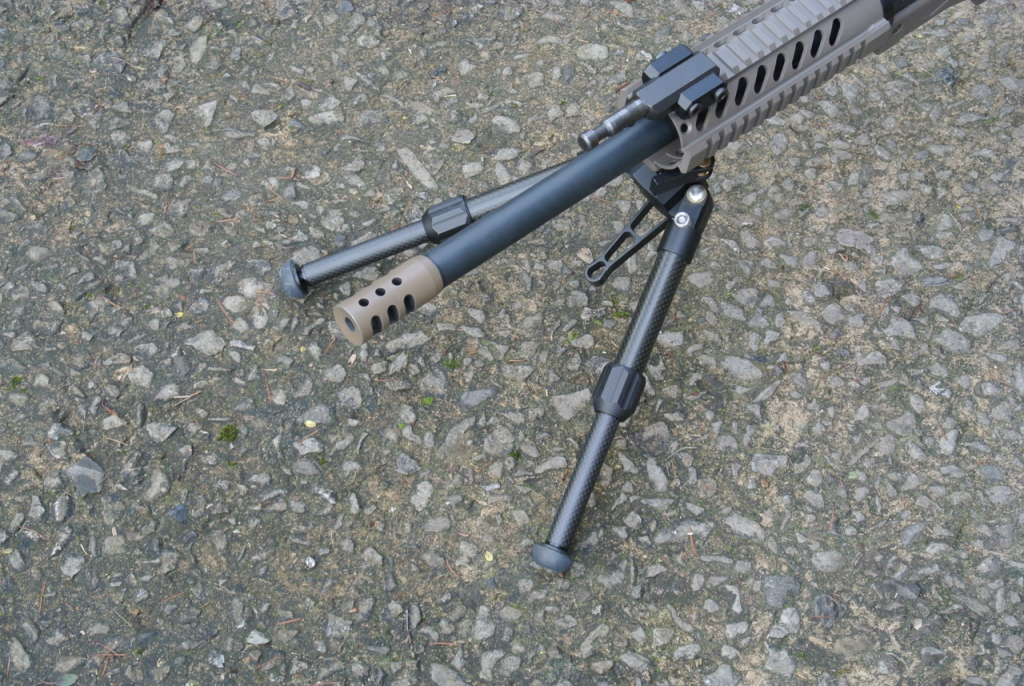
The legs can be easily set at 45 or 90 degrees – like the Atlas and the feet are rubber, half-round but at this stage, I don’t know if there is an alternative (as offered with the Tier One).
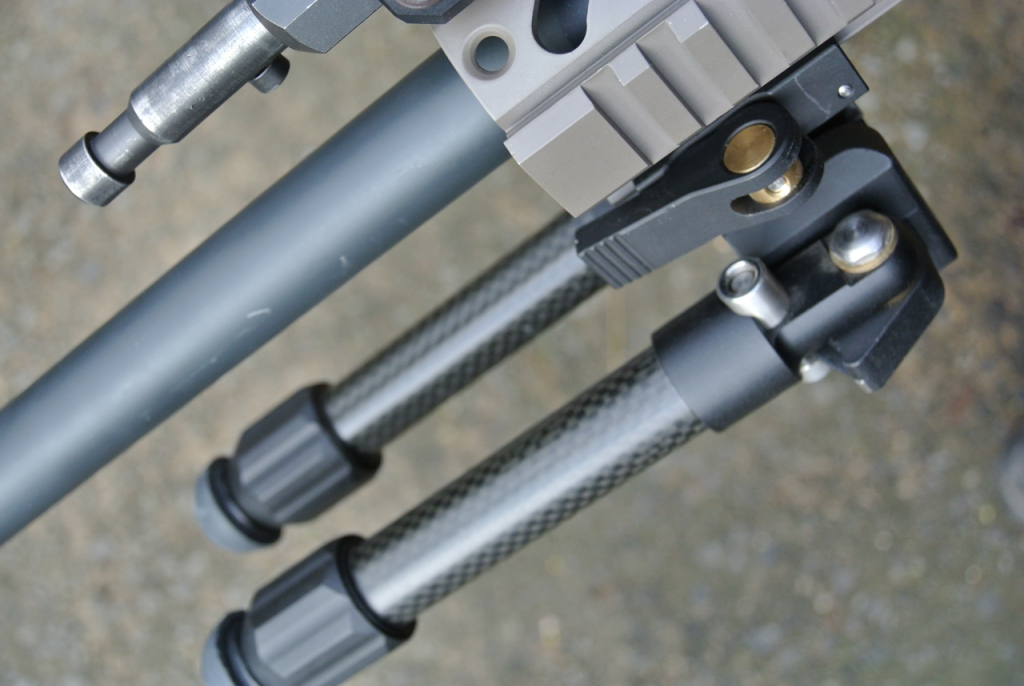
Fixing is via a Pic. rail under the rifle’s fore-end and a small length of Pic. rail and T nuts are thoughtfully provided. The Pic. rail clamp-lever is the tried ‘n’ tested Atlas QD style. This bi-pod oozes quality and looks heavier than its 15oz. weight. Collapsed, the bi-pod measures 7 inches from ground to Pic rail and when extended – 10 inches.
Our second bi-pod is branded ‘Gubrother’. A quick internet search revealed – nothing – except a Brazilian band!
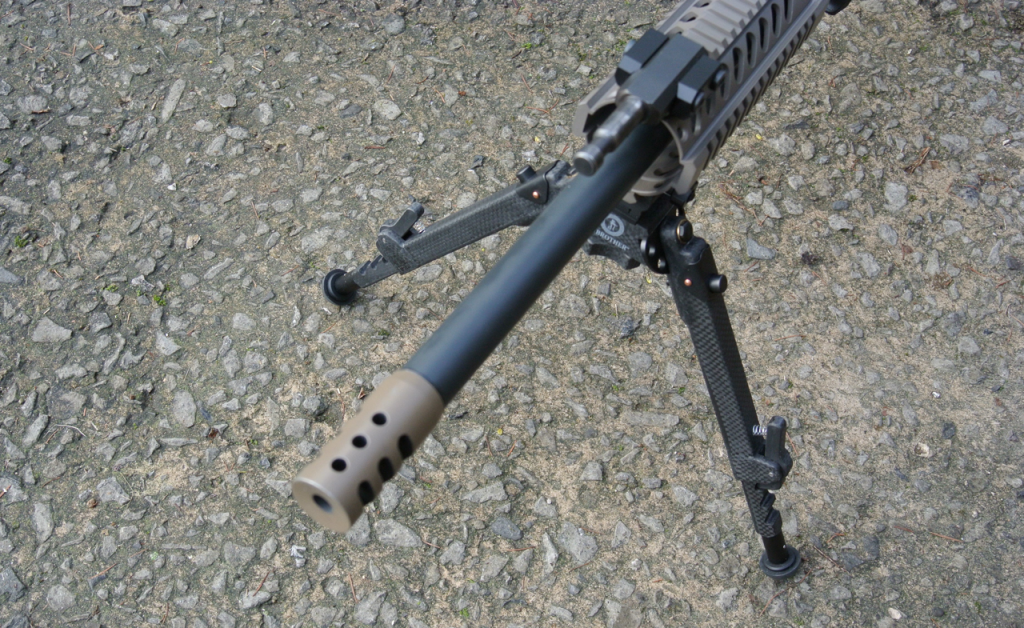
This is a strange looking bi-pod. It’s a big, chunky thing and although the legs are carbon-fibre, ‘Gucci’ isn’t the first word that springs to mind but it looks sturdy.
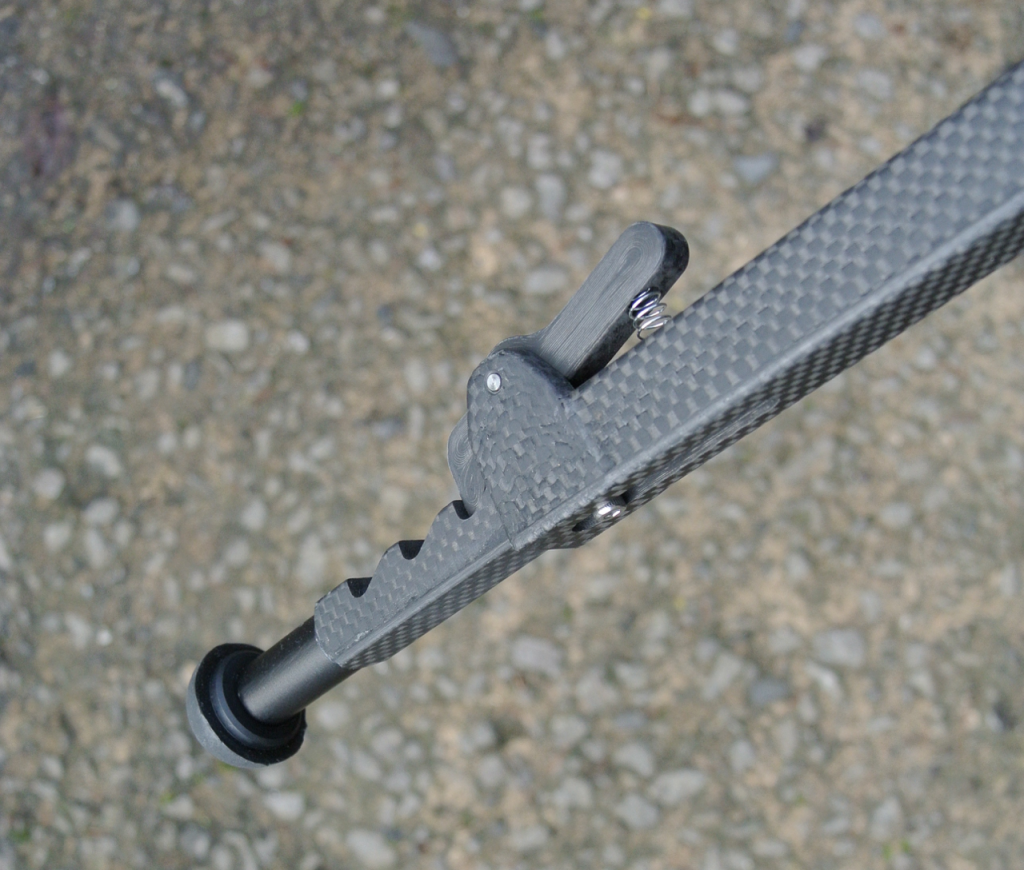
The notched legs are rather crude-looking but workmanlike – if you know what I mean….
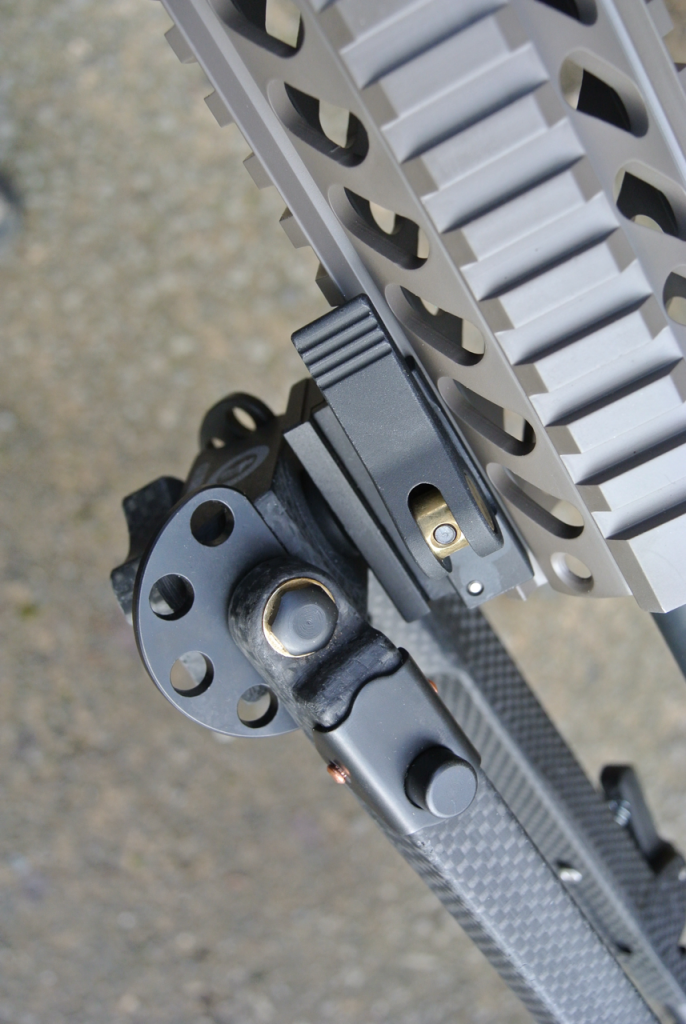
Again, it is designed to fix to an under fore-end Pic rail using an Atlas – style clamp which allows the rifle to tilt and swivel – which locks with a large clamping knob.
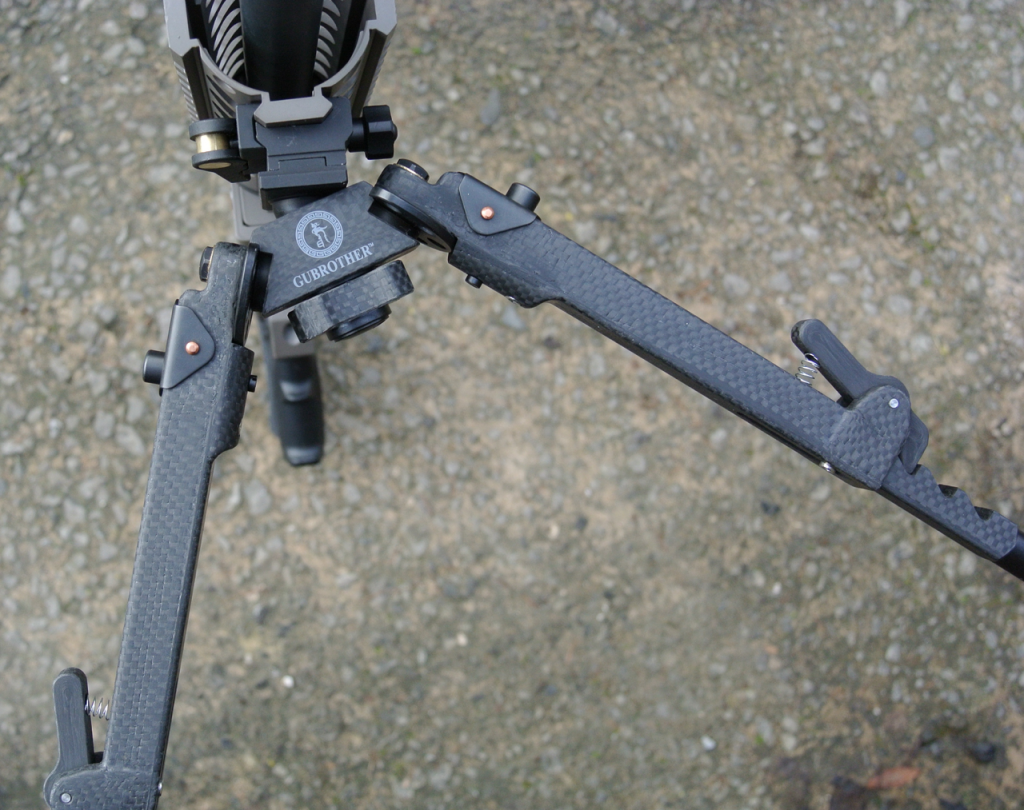
It’s bulkier than the other bi-pod yet, thanks to carbon-fibre, it weighs almost the same at 16oz. Here, carbon-fibre is used for its strength and lightness rather than appearance. Collapsed, it measures 8 inches but fully extended adds just an inch.
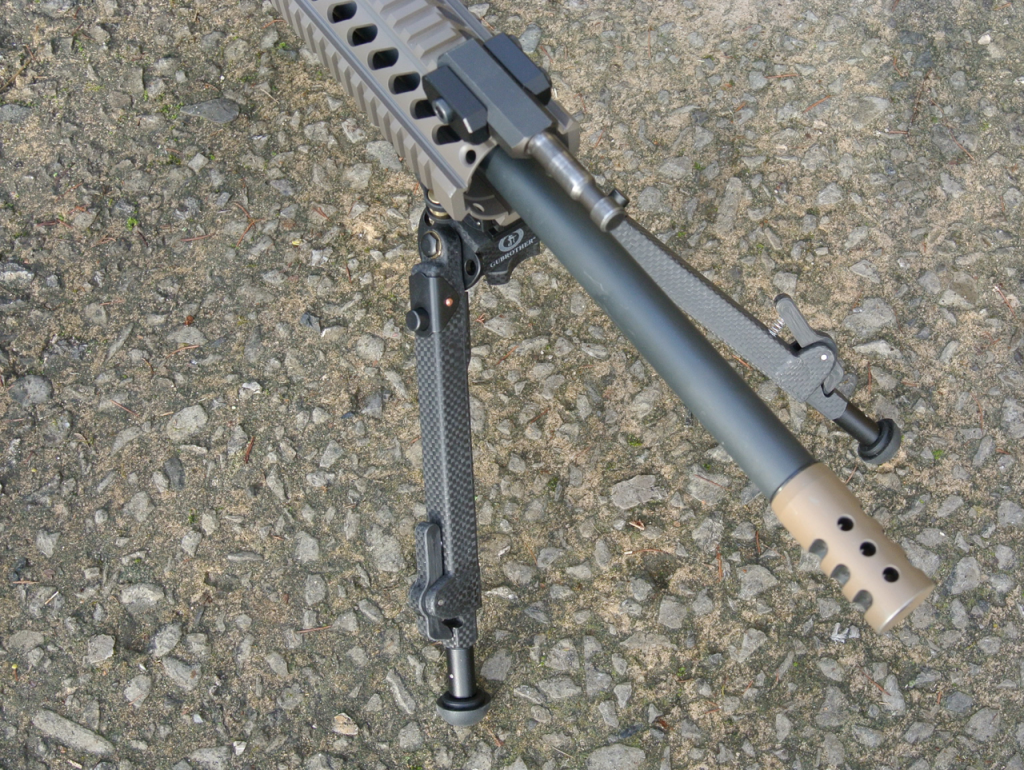
The legs can be swiveled forwards (and backwards) – like the Atlas – and locked at 45 or 90 degrees. Is it as rugged as it looks? Hard to say but it wouldn’t look out of place on a 338.
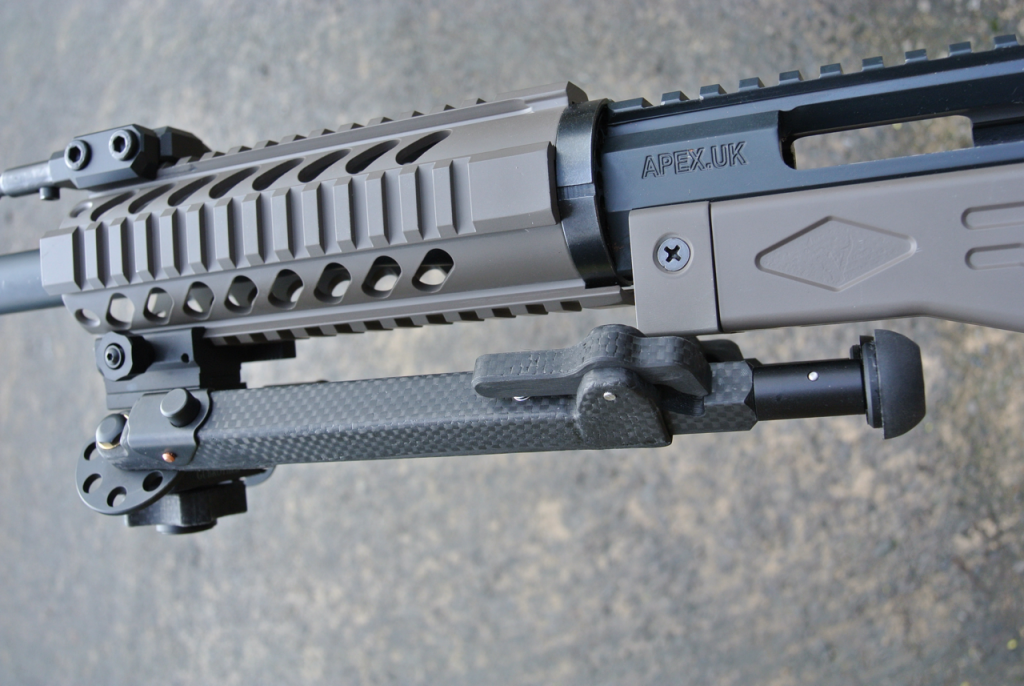
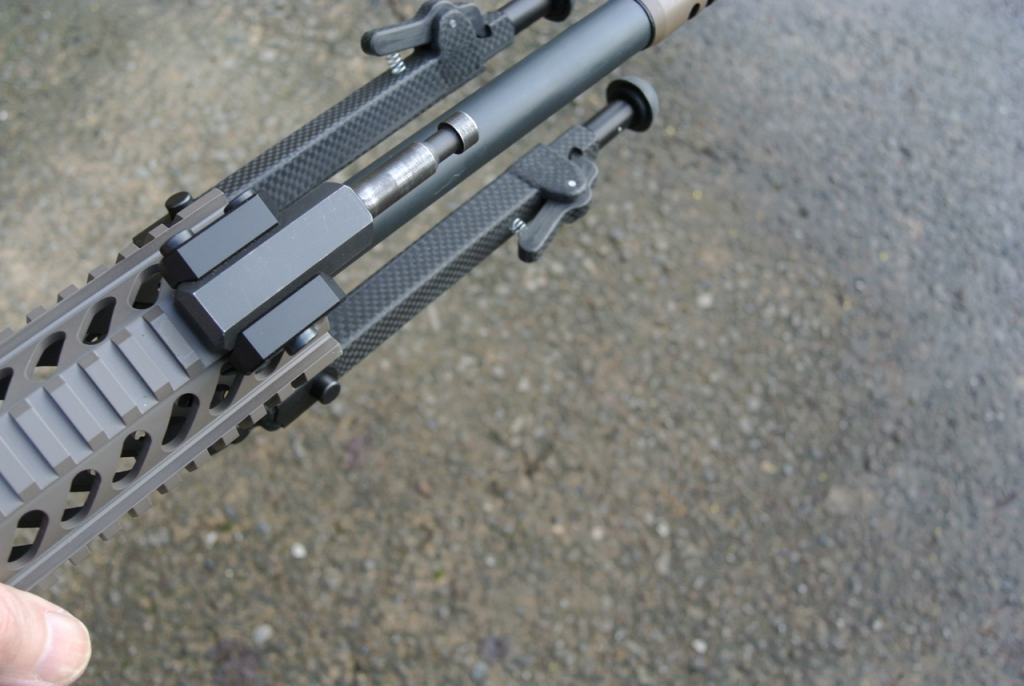
Conclusions
After examining and photographing these two bi-pods I was super-impressed with the look and beautiful engineering of the smaller bi-pod but, after actually shooting with them, personally I would pick the larger one. OK, it looks a little crude in some aspects but it offers good support to the rifle and does everything I could want from a bi-pod. I like to get as low as possible with a bi-pod so the limited height adjustment in the legs doesn’t bother me but, it is a good inch higher than the other one in the fully collapsed position. However, the spread on the legs is much wider than the smaller bi-pod – which is similar to a Harris – and thus a bit less stable, particularly with a heavy rifle.
So, bi-pods have become more sophisticated but that comes with increased cost. We can still get a Harris and plenty of change from £100 but these two are a bit more expensive at around £150.
